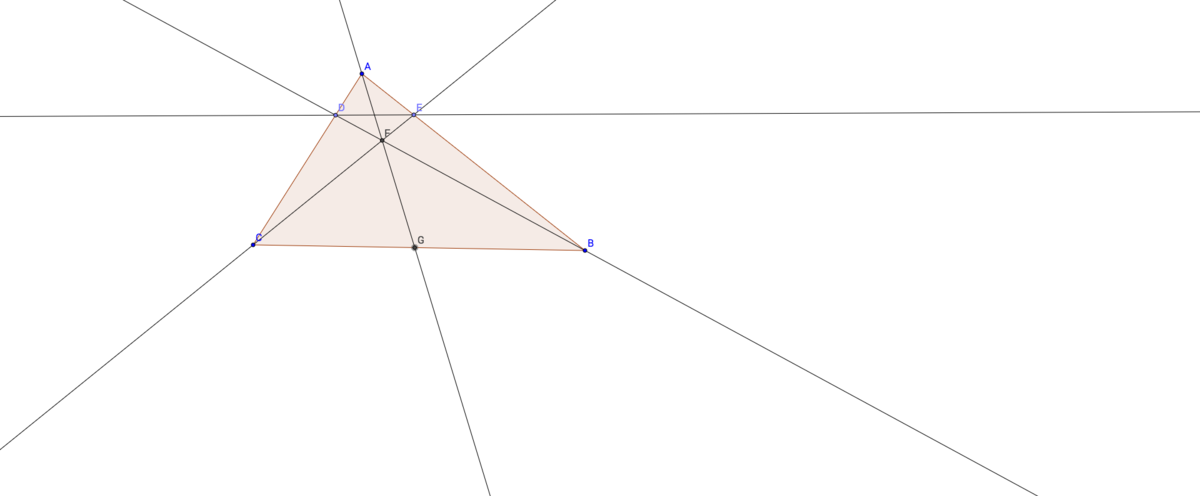The Great Divide
You have a triangle ABC and you draw a line from a point D on AC such that it is parallel to BC and it meets AB at E. Join EC and BD and these lines meet at F. AF meets BC at G.
If , find .
The answer is 3.
This section requires Javascript.
You are seeing this because something didn't load right. We suggest you, (a) try
refreshing the page, (b) enabling javascript if it is disabled on your browser and,
finally, (c)
loading the
non-javascript version of this page
. We're sorry about the hassle.
Ceva's theorem is applicable here as AG, CD and BE are concurrent.
S o y o u h a v e D C A D = E C A E b y s i m i l a r t r i a n g l e l o g i c a n d C G × B E × A D = D C × G B × E A , u s i n g C e v a ′ s t h e o r e m . W e g e t , a f t e r c a n c e l l a t i o n , C G = G B . S o , a = 1 a n d b = 2 t o g i v e a + b = 3 . \